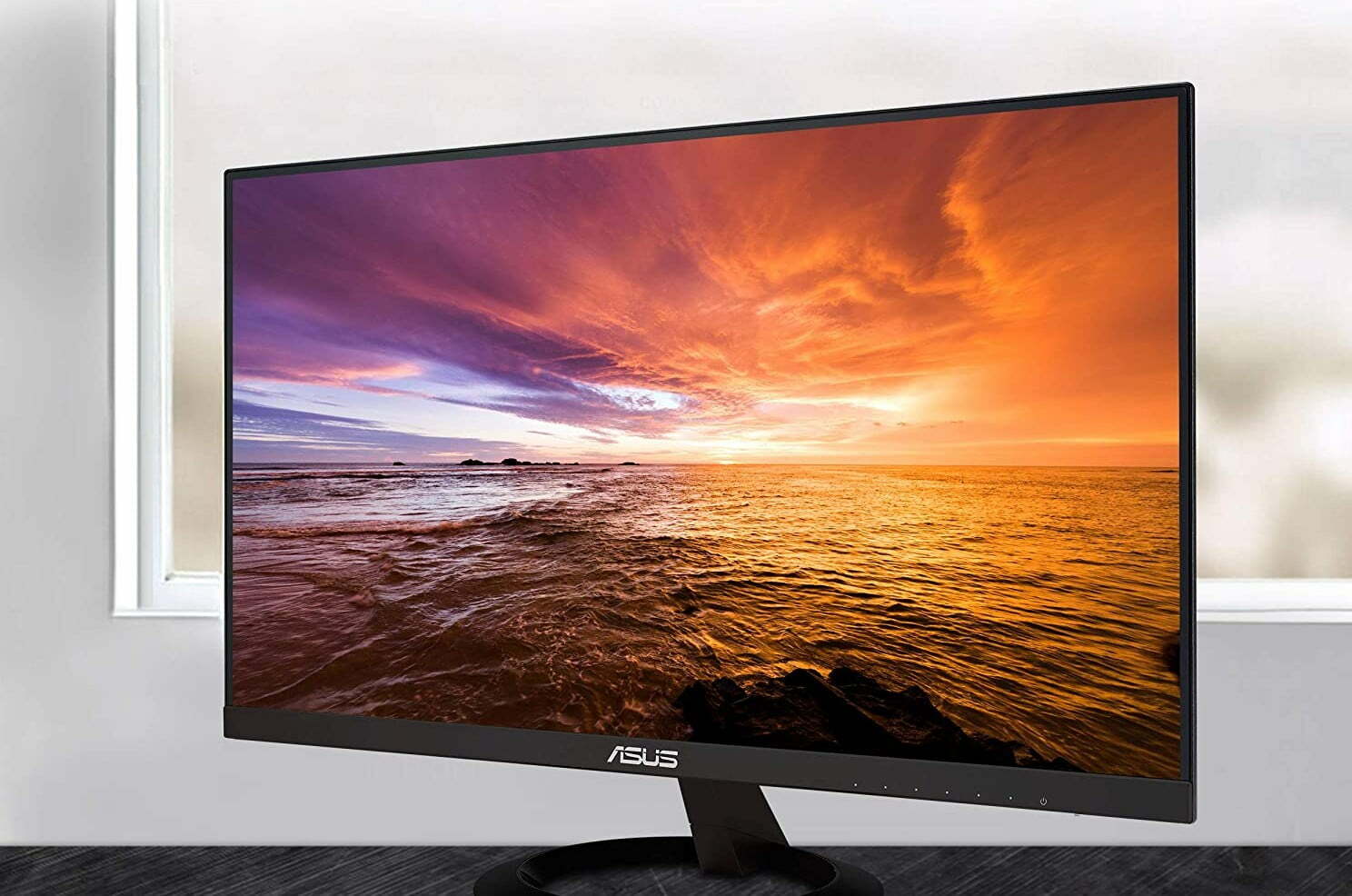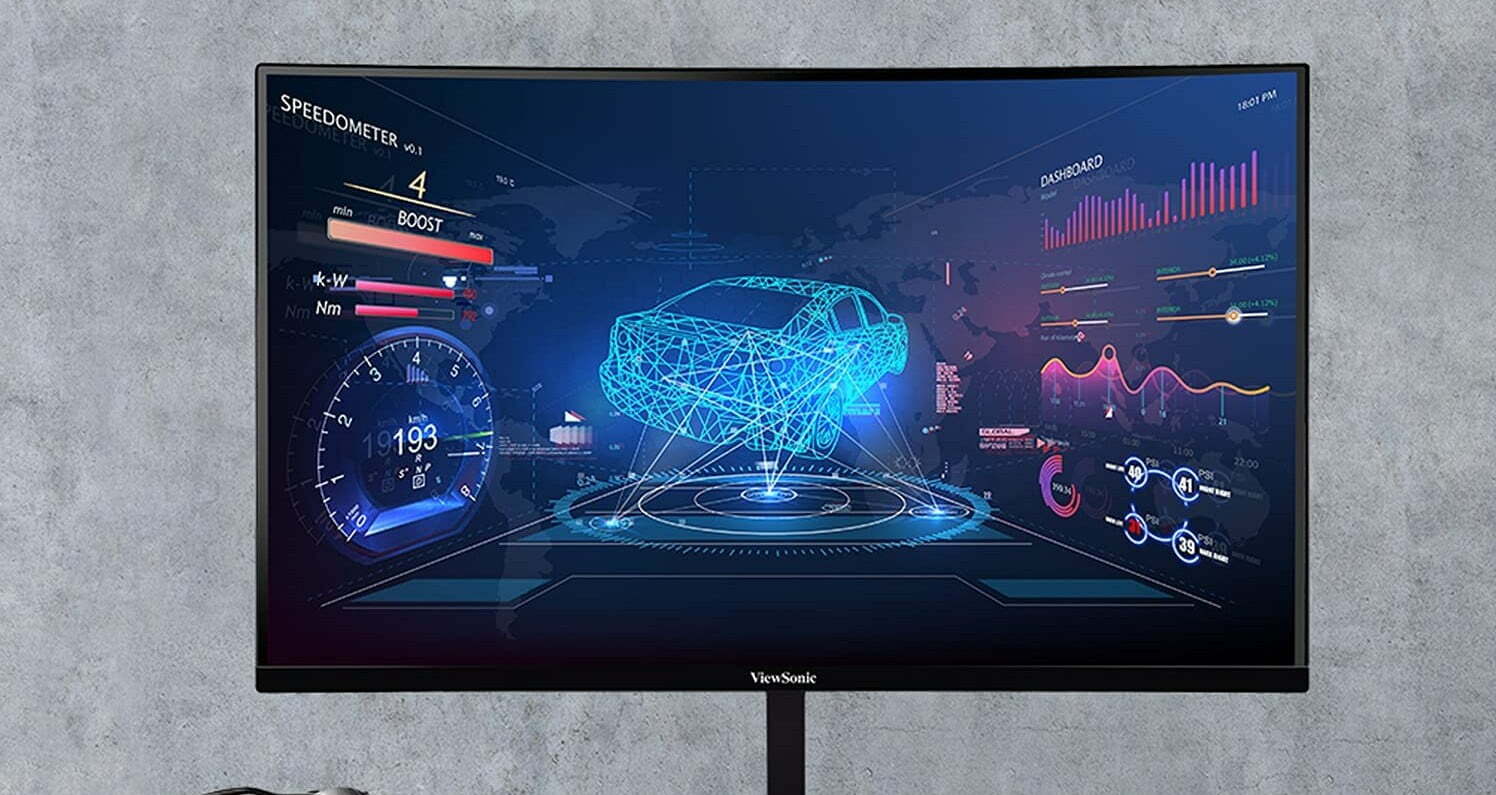If you are looking to buy a new display for gaming or professional use, you may be comparing 24 vs 27-inch monitor sizes. The best computer monitors, after all, come in a wide variety of shapes and sizes. Keep reading to learn some differences between these two display sizes.
KEY TAKEAWAYS:
- 27-inch monitors are, obviously, larger, making them a good choice for streaming content, such as TV and movies.
- 24-inch displays are the standard for competitive gaming scenarios, but larger monitors are probably best for most, except when it comes to choosing the finest 24-inch gaming monitor.
- A 27-inch screen will cost slightly more than a 24-inch monitor, though they will take up more room.
Differences Between 24-Inch Monitors and 27-Inch Monitors
The obvious difference here is screen size, and you want the finest monitor size for gaming, among other things. The leading 27-inch displays are a good bit larger than a 24-inch monitor. This disparity in size leads to a number of subtle and not-so-subtle differences, such as when you are comparing a computer monitor vs a TV. Despite all these differences, what matters is getting the best monitor for gaming and productivity.
Here are some more ways in which 24-inch screens and 27-inch screens differ.
Immersion
There is no way around it. A larger monitor size translates to increased immersion while playing games, watching streaming content, and conducting professional or creative work. Additionally, 27-inch monitors tend to offer availability in the ultrawide format, with a 21:9 aspect ratio, whereas 24-inch monitors do not. Ultrawide monitors are especially known for immersion, as well as curved monitors, like the one you’ll read about in our Samsung 27-inch CRG5 240Hz curved gaming monitor review.
Resolution
Both sizes offer similar resolutions, including 4K panels, but you can make the most of an ultra-high-definition experience better with a larger monitor. With smaller 4K monitors, text can be difficult to read at times and you may struggle to find the best sitting distance for a maximum viewing angle. Additionally, some smaller monitors may not support all cable connection types, if you are comparing computer monitors with DisplayPort vs HDMI ports.
Cost
Larger monitors tend to cost more than smaller monitors, as they demand fewer components. This can come in handy if you are trying to build a budget-friendly gaming room or multimedia room. The difference in cost will not be astronomical, however, as 27-inch displays have been lowering in price throughout the years.
Competitive Gaming
If you are an avid and competitive gamer, you will find that 24-inch monitors are the standard size option in many professional gaming competitions. This holds particularly true for first-person shooters since a 24-inch screen can make your gaming more efficient by helping your eyes take less time to take in what’s happening on the entire screen versus a larger 27-inch monitor size. If you’re a casual gamer that plays less demanding games, then 27 inch models and other larger displays will still make your gaming feel more immersive.
Space
If you are short on space, go for a 24-inch display, as it will not take up too much room on the desk or wherever else you put it. The same cannot be said for 27-inch displays, so take that into consideration.
Insider Tip
You can easily find a used 24-inch monitor if you are shopping for bargains.
F.A.Q.S
Why use a 24-inch monitor?
24-inch 1080p monitors are great for most situations, despite being slightly smaller than, say, 32-inch monitors.
What monitor size is used in Esports?
24-inch monitors are the go-to size for most esports competitions, due to high refresh rates, decent image quality, and good screen resolution.
Which monitor size is best for me?
This will depend on personal preference regarding a number of stats, including pixel density, refresh rates, normal viewing distance, image quality, desired screen real estate, and HD resolution demands.
STAT: 24-inch monitors are among the most common size for a display. This means that there are many options to choose from when compared to larger displays. (source)


































![Best 27 Inch Computer Monitor in [year] 27 Best 27 Inch Computer Monitor in 2026](https://www.gadgetreview.dev/wp-content/uploads/how-to-buy-the-best-computer-monitor.jpg)
![Best BenQ Monitors in [year] 28 Best BenQ Monitors in 2026](https://www.gadgetreview.dev/wp-content/uploads/best-benq-monitor-image.jpg)
![Best ASUS Monitors in [year] 29 Best ASUS Monitors in 2026](https://www.gadgetreview.dev/wp-content/uploads/best-asus-monitor-image.jpg)
![Best Dell Monitors in [year] 30 Best Dell Monitors in 2026](https://www.gadgetreview.dev/wp-content/uploads/best-dell-monitor-image.jpg)
![Best HP Monitors in [year] 31 Best HP Monitors in 2026](https://www.gadgetreview.dev/wp-content/uploads/best-hp-monitor-image.jpg)
![Best Lenovo Monitors in [year] 32 Best Lenovo Monitors in 2026](https://www.gadgetreview.dev/wp-content/uploads/best-lenovo-monitor-image.jpg)
![Best ViewSonic Monitors in [year] 33 Best ViewSonic Monitors in 2026](https://www.gadgetreview.dev/wp-content/uploads/best-viewsonic-monitor-image.jpg)
![Best Gigabyte Monitors in [year] 34 Best Gigabyte Monitors in 2026](https://www.gadgetreview.dev/wp-content/uploads/best-gigabyte-monitor-image.jpg)
![Best Monitors for PS4 Pro Gaming in [year] 35 Best Monitors for PS4 Pro Gaming in 2026](https://www.gadgetreview.dev/wp-content/uploads/best-monitors-for-ps4-pro-image.jpg)
![Best Monitor for Xbox Series X in [year] 36 Best Monitor for Xbox Series X in 2026](https://www.gadgetreview.dev/wp-content/uploads/best-monitor-for-xbox-series-x-image.jpg)
![Best Acer Monitors in [year] 37 Best Acer Monitors in 2026](https://www.gadgetreview.dev/wp-content/uploads/best-acer-monitor-image.jpg)
![Best MSI Monitors in [year] 38 Best MSI Monitors in 2026](https://www.gadgetreview.dev/wp-content/uploads/best-msi-monitor-image.jpg)
![Best SAMSUNG Monitors in [year] 39 Best SAMSUNG Monitors in 2026](https://www.gadgetreview.dev/wp-content/uploads/best-samsung-monitor-image.jpg)
![Best LG Monitors in [year] 40 Best LG Monitors in 2026](https://www.gadgetreview.dev/wp-content/uploads/best-lg-monitor-image.jpg)
![Best AOC Monitors in [year] 41 Best AOC Monitors in 2026](https://www.gadgetreview.dev/wp-content/uploads/best-aoc-monitor-image.jpg)
![Best Philips Monitors in [year] 42 Best Philips Monitors in 2026](https://www.gadgetreview.dev/wp-content/uploads/best-philips-monitors-image.jpg)
![Best Monitors For PUBG in [year] 43 Best Monitors For PUBG in 2026](https://www.gadgetreview.dev/wp-content/uploads/best-monitor-for-pubg-image.jpg)
![Best Stream Decks in [year] 44 Best Stream Decks in 2026](https://www.gadgetreview.dev/wp-content/uploads/best-stream-deck-image.jpg)
![Best Monitors for Streaming in [year] 45 Best Monitors for Streaming in 2026](https://www.gadgetreview.dev/wp-content/uploads/best-monitor-for-streaming-image.jpg)
![Best Monitors For Flight Simulator in [year] 46 Best Monitors For Flight Simulator in 2026](https://www.gadgetreview.dev/wp-content/uploads/best-monitor-for-flight-simulator-image.jpg)




















